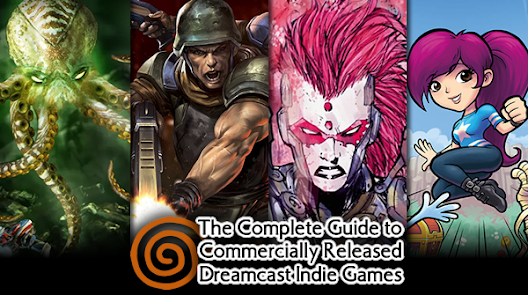Flea!2
Despite its NES roots, Flea! - from Dundee-based developer Alastair Low - was one of the most surprising indie titles to hit the Dreamcast back in 2020. Mike reviewed it very positively here on the blog, praising its fun but challenging gameplay that involved guiding a constantly jumping Flea through many deadly levels, collecting blood desperately needed by flea-kind. It seems it wasn't just Mike who thought this game was great though, as Flea! would go on to rank at 147 in our 2023 Top 200 Dreamcast Games vote, and 11 in our recent Top 25 Dreamcast Indie Games vote. The exceptionally fun Tapeworm Disco Puzzle followed next, building on the Flea! universe, and further cementing Alastair in the minds of the scene as a super talented developer. Have you seen the pop up book game he's been making too? Holy cow, dude.
Other than his upcoming collaboration with John Riggs, Chew Chew Mimic, which will also eventually be coming to Dreamcast, Alastair has been teasing development of a sequel to Flea! on Twitter for a little while now, but today it has hit Kickstarter - on a "leap" day, just as the original did! With a total backer goal of £7,000, Flea!2 is looking to to be more of the same goodness as the first game, but with some improvements and new mechanics. Alastair says in the Kickstarter teaser video that the game's "later levels will have you absolutely pulling your hair out". Basically, if you loved the first game, you're going to love this sequel too.
From the Kickstarter, improvements are listed as follows:
- Dash ability from the start of the game
- Animated tiles
- Wormholes
- New UI with Level numbers
- More cutscenes like in Tapeworm New
- Music Tracks
- Smaller spike hitboxes
- Better swimming controls
- Dash works in boss levels
- Breakable boxes only break from top now
There is currently an early bird offer available which means you can grab the Dreamcast version of the game for £25 (early bird price is limited to the first 50 copies, and the normal price is £30). Of course there's NES carts available for £30+ (depending if you want the cart loose or complete in box), or if you'd prefer, a digital edition for £10. The Kickstarter is also offering some great add-ons, such as the Funstock Flea! plush, which I was sad to find was sold out on their store after reading Mike's article on Dreamcast game merch. Well, there's only 30 left, so get one while you still can by backing Flea!2! Oh, now there's 29 left, because I just backed (sorry!) You can also add a copy of Tapeworm Disco Puzzle to your order too, which is definitely worth it if you've not played it yet. All this is expected to be delivered in December 2024.
 |
| Don't talk shit about Mike's son. |
If you’re someone who is unsure about Flea!2 on Dreamcast due to it being an NES game, there is a demo currently available to download for free. So give that a play and I'm sure you'll come away realising that the game is tonnes of fun, just as many others did. The quality and fun gameplay of Alastair's games speak for themselves.
Once again, the Kickstarter campaign can be found here.
Super Cambur Origins
Our second indie is Super Cambur Origins from Spanish developers NAPE Games, and their title actually shares more in common with Flea!2 than just a campaign launch date. Similar to Alastair, NAPE also have a penchant for threading together universes of connecting storylines and characters, with both Ploid and Reknum Souls Adventure setting things off in 2022. The other thing Super Cambur Origins has in common with a game like Flea!2 is its NES roots.
Super Cambur Origins is an NES platformer featuring a banana superhero (that's what "cambur" translates to!) whose concept may evoke memories in British kids of a certain age… Although that was a human who ate bananas to become super, not a superhero banana... anyway, there's a Dreamcast port available as part of this campaign for €27, along with a digital edition.
Super Cambur's Kickstarter has actually launched as a campaign to fund multiple games all taking place in the same “multiverse”, with an RPG called Super Cambur and the Sacred Orbs - which appears to just be for PC (Steam) - also available. There is also stretch goal prospects for a Switch and Steam fighting game called Super Cambur Skillmasters. Either way, the game you're getting for the Dreamcast is Super Cambur Origins, the platformer.
You can check out the project page here. I also recommend watching The Sega Guru's video below for a good rundown of everything.
***
Will you be backing either of these projects? Maybe both? Let us know in the comments below, or via one of our social media platforms.




































.png)















